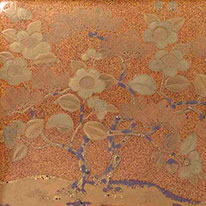Past Exhibitions
- Feature Exhibition: Olympia Meets Japanese Art
- June 5, 2021 - July 4, 2021
The Kyoto National Museum is pleased to present treasures from its collection to compare and contrast the ancient Olympics in Greece and religious folkways in Japan. The people of ancient Greece worshipped many gods and goddesses, and among the famous Panhellenic Games held to honor their deities, the most important and famous were the games held every four years at Olympia. Sacred ground to all Greeks, Olympia was a center of religious worship and the location of a magnificent temple to Zeus, lord of the heavens and almighty in the Greek pantheon. The athletes who competed at Olympia trained their minds and bodies to compete before these gods. The victors were feasted for days on end and gained the right to dedicate a statue of themselves on the temple grounds. In their home communities they were honored for the rest of their lives.
Like the ancient Greeks, Japanese since distant antiquity worshipped many deities, competed with each other in the presence of the divine, trained themselves mind and body, celebrated their victories, and feasted together with their gods.
This exhibit introduces art of Japan and East Asia that resonates with the stories and legends of the ancient Olympics, creating what we hope will be an opportunity to enjoy the arts of Asia while learning more about the world of ancient Greece.
2. Sacred Treasures
The deities of Japan and of ancient Greece are alike in that they are described in very human terms, falling in love and quarreling with siblings, for example. Imagining deities as human, people built them shelters (shrines) and presented them with furnishings and items of apparel that became shrine treasures called shinpō. Both the buildings and the clothing and other goods were traditionally replaced as they grew worn. Ordinary offerings that had become old or shabby would be removed from the shrine; they were buried in the earth or burned, or sometimes given away to people related to the shrine. But items of high quality were stored with great care as permanent shrine treasures, and these items are what have been preserved as ko-shinpō (old shrine treasures).
The finely worked shrine treasures shown in this exhibition are those offered to the deities at Kumano by emperors, retired emperors, the shogun Ashikaga Yoshimitsu (1358–1408), and other leaders during the time the court was split into Northern and Southern lines in the late-fourteenth century. These items testify to the way people of those times understood the divine and expressed their reverence.












